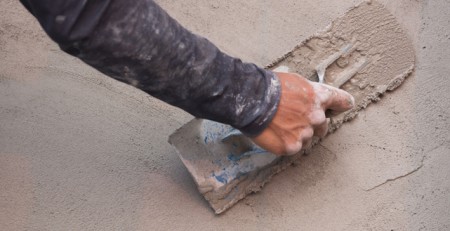How to Find a Plasterer?
If you are doing home remodeling most likely you will need to hire a plasterer. In order to make sure you find the right person for the job we have created a short list that will guide you through the process and help you avoid making some of the mistakes most people do. Let’s take a look at these tips on how to find a plasterer?
- Hire professional help. Don’t try to do things on your own as if you do them wrong it won’t look good. At the end you will lose time, money and still you will end up hiring a professional.
- Rely on recommendations. You can ask your friends and family if they have someone to recommend. It’s always good to work with someone you know has done a good job in the past. If they don’t have anyone to recommend then you can visit some online forums and different websites that can help you find contractors. Check www.mybuilder.com and www.ratedpeople.com. You can simply enter the postcode and you will get a list of reliable contractors in your local area.
- Always read reviews and ask to see their previous work. It would also be a good idea if you can talk to some of their previous clients just to see what they have to say for their services.
- Check what they offer you for the money you pay. Plastering is a messy job so make sure you confirm who is responsible for cleaning up the mess once the job is done.
What is a plasterer?
The plasterer applies plaster to walls, ceilings, or other structures to make them smooth and ready for the paint or wallpaper you have chosen. There are many different plastering techniques, but the most common one is applying a wet mix of gypsum or cement and water. The material is spread onto the bricks and then it is covered by a thin layer of gypsum. Once the wall dries you can apply the desired paint or wallpaper.
One of the things that make the wet plaster so popular choice is that it gives smooth and durable finish to the walls, soundproofs the room and closes any openings. If you still want to try something different you can go with dry lining.
What is dry lining?
The dry lining is faster to put, doesn’t need a lot of time to dry and it has lower chances of cracking over the wet plaster. For dry lining the plasterer uses pre – made paper-covered plasterboards, especially designed for walls and ceilings. They are placed on the surface, bonded together, nailed and then screwed in place so they won’t move or fall off.
If you want to attach them to masonry walls you can use them to fix all boards into their place and get them ready for decoration. Then you can apply a thin coat of wet plaster or simply paint them directly.
How long does it usually take for the plastering process to be completed?
Defining an exact time frame can be tricky because each project is different. The time needed for the plastering process to be completed depends on many factors such as the quality of work, the plasterer’s experience, the weather conditions and the areas that need to be covered.
Usually it takes one day per room. However, if it is winter it might take a bit longer for the plaster to dry, assuming you are going with the “wet” option. In summer the drying goes a lot faster so it should take less time.
How much does it usually cost to hire a plasterer?
Different plasterers have different fees. Sometimes it depends on their experience, sometimes of the quality of work they provide or the materials they use. They can work on a supply and fix, part supply or only offer their labour. The average price goes from £50-£100 per labourer, and that is a quote for one day work. Some plasterers will give you a discount if you need more work done and some might offer lower prices if the project is small. If you are looking to hire a plasterer from the inner cities you might have to pay a little more which comes to about £200 per day.
Who should provide the tools and materials for the plastering process?
In most cases the plasterers will bring their own tools, the utensils they need to mix the goods and the materials they will use for the plastering. The reason for this is that plasterers usually use one type of material they are most comfortable with and know for sure that it provides the quality they need.
However, if you decide to go with the plasterboard technique, then you might need to procure the materials on your own along with everything else that is needed for the complete process.
How will I know if the work was done well?
This is not so difficult to spot. You have to look at the top layer of the plaster. The perfect one would be smooth and level. The best way to check the condition is by looking at the surface directly from the middle of the walls and outwards. Make sure the lights are on and the curtains are off as you will have enough light to estimate the quality.
If during your inspection you notice some bumps or angles you don’t like make sure to point out these issues and discuss them with the plasterer. It is always better to try and fix things at the beginning as later there might not be room for any modifications.



